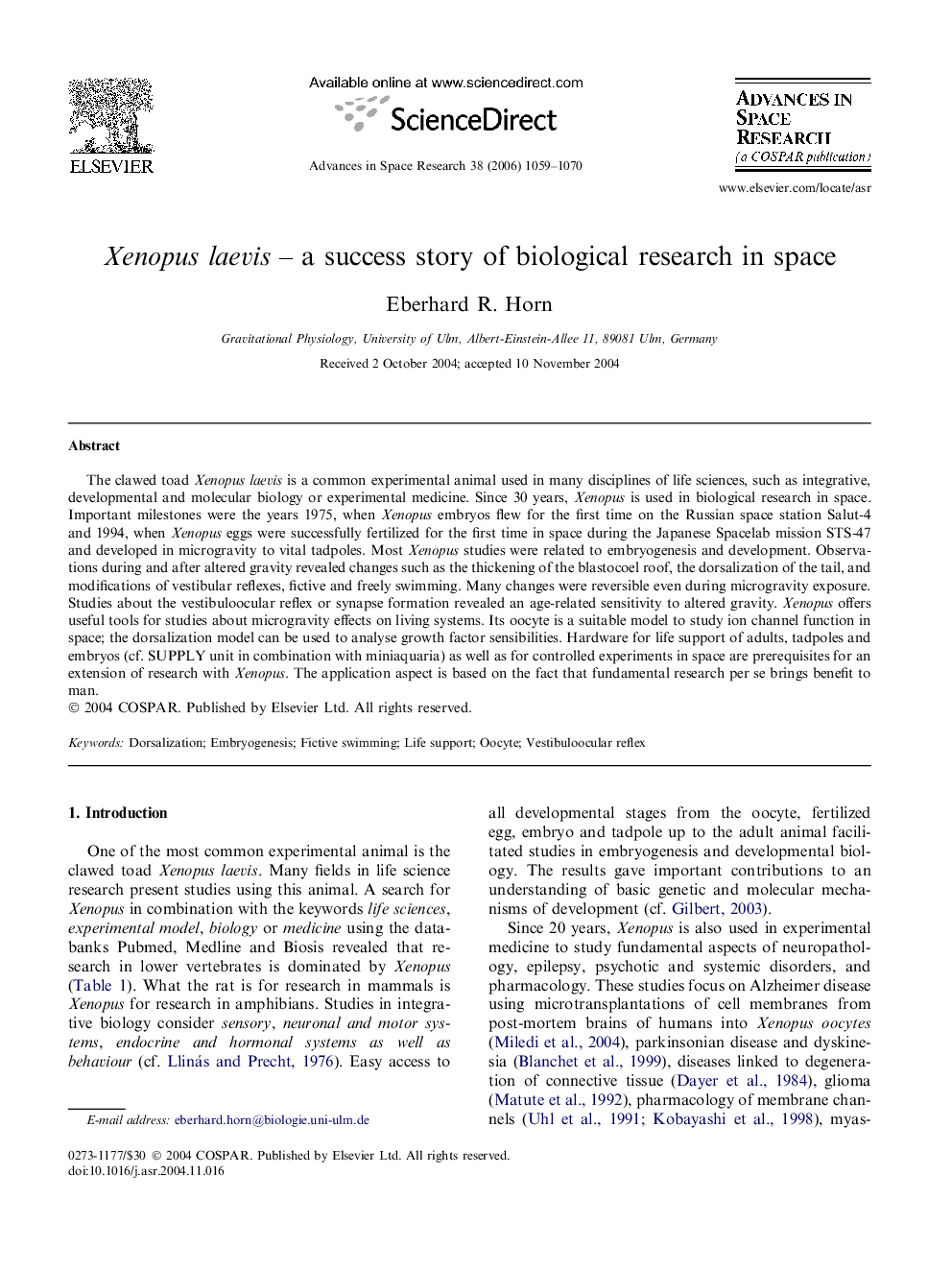| کد مقاله | کد نشریه | سال انتشار | مقاله انگلیسی | نسخه تمام متن |
|---|---|---|---|---|
| 1769351 | 1020270 | 2006 | 12 صفحه PDF | دانلود رایگان |
عنوان انگلیسی مقاله ISI
Xenopus laevis - a success story of biological research in space
دانلود مقاله + سفارش ترجمه
دانلود مقاله ISI انگلیسی
رایگان برای ایرانیان
کلمات کلیدی
موضوعات مرتبط
مهندسی و علوم پایه
علوم زمین و سیارات
علوم فضا و نجوم
پیش نمایش صفحه اول مقاله

چکیده انگلیسی
The clawed toad Xenopus laevis is a common experimental animal used in many disciplines of life sciences, such as integrative, developmental and molecular biology or experimental medicine. Since 30 years, Xenopus is used in biological research in space. Important milestones were the years 1975, when Xenopus embryos flew for the first time on the Russian space station Salut-4 and 1994, when Xenopus eggs were successfully fertilized for the first time in space during the Japanese Spacelab mission STS-47 and developed in microgravity to vital tadpoles. Most Xenopus studies were related to embryogenesis and development. Observations during and after altered gravity revealed changes such as the thickening of the blastocoel roof, the dorsalization of the tail, and modifications of vestibular reflexes, fictive and freely swimming. Many changes were reversible even during microgravity exposure. Studies about the vestibuloocular reflex or synapse formation revealed an age-related sensitivity to altered gravity. Xenopus offers useful tools for studies about microgravity effects on living systems. Its oocyte is a suitable model to study ion channel function in space; the dorsalization model can be used to analyse growth factor sensibilities. Hardware for life support of adults, tadpoles and embryos (cf. SUPPLY unit in combination with miniaquaria) as well as for controlled experiments in space are prerequisites for an extension of research with Xenopus. The application aspect is based on the fact that fundamental research per se brings benefit to man.
ناشر
Database: Elsevier - ScienceDirect (ساینس دایرکت)
Journal: Advances in Space Research - Volume 38, Issue 6, 2006, Pages 1059-1070
Journal: Advances in Space Research - Volume 38, Issue 6, 2006, Pages 1059-1070
نویسندگان
Eberhard R. Horn,